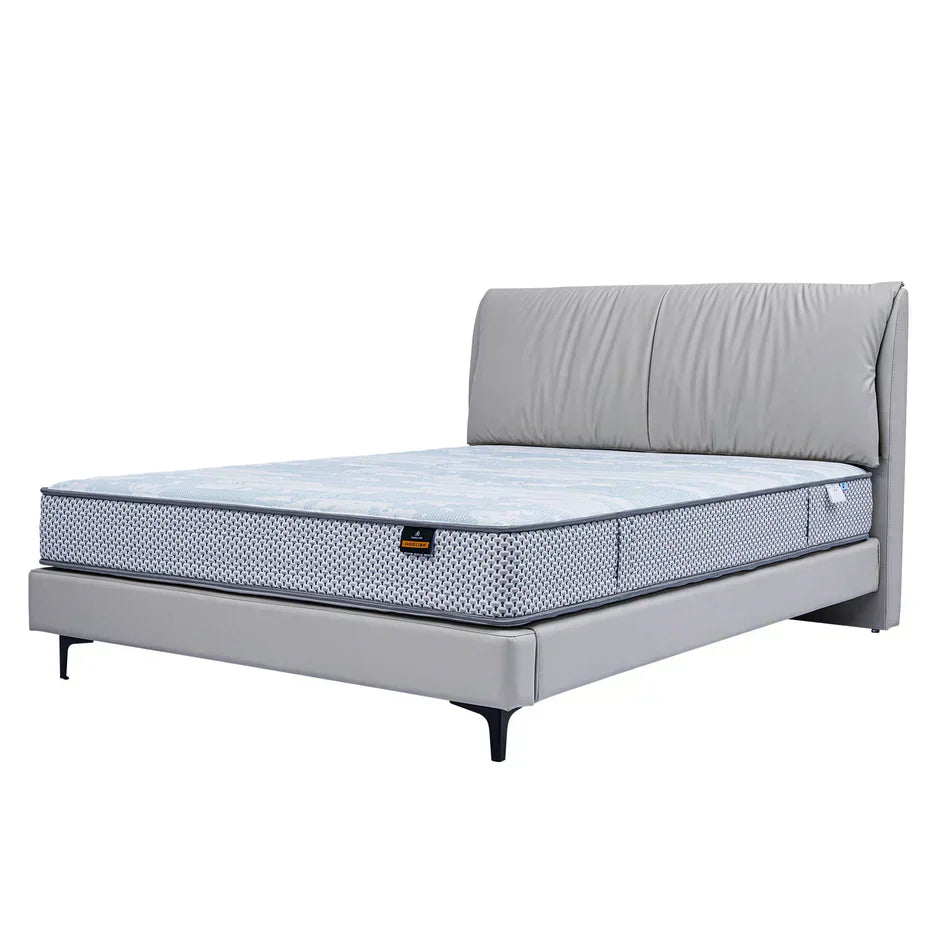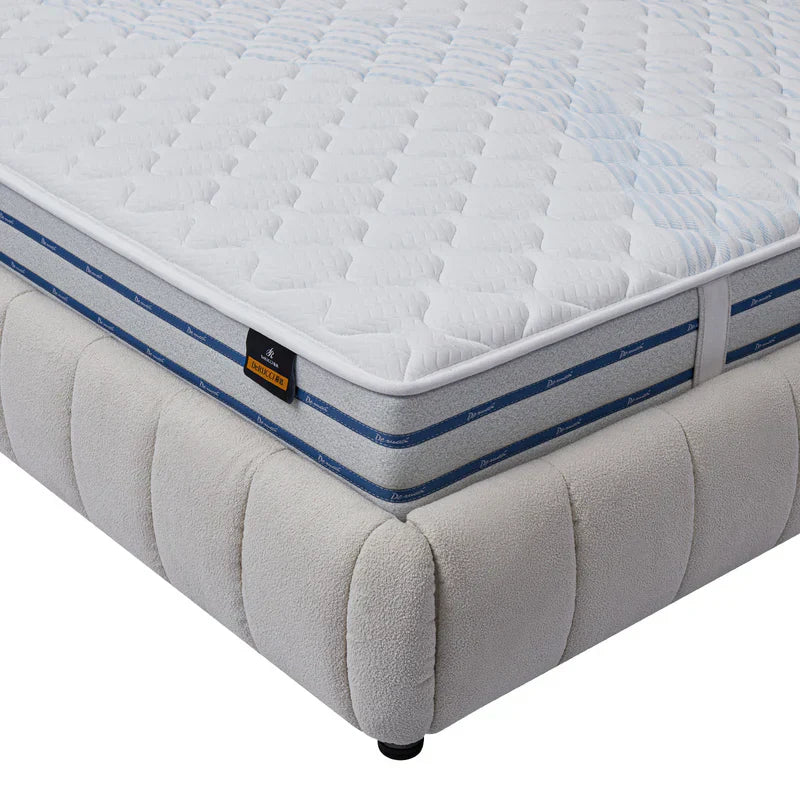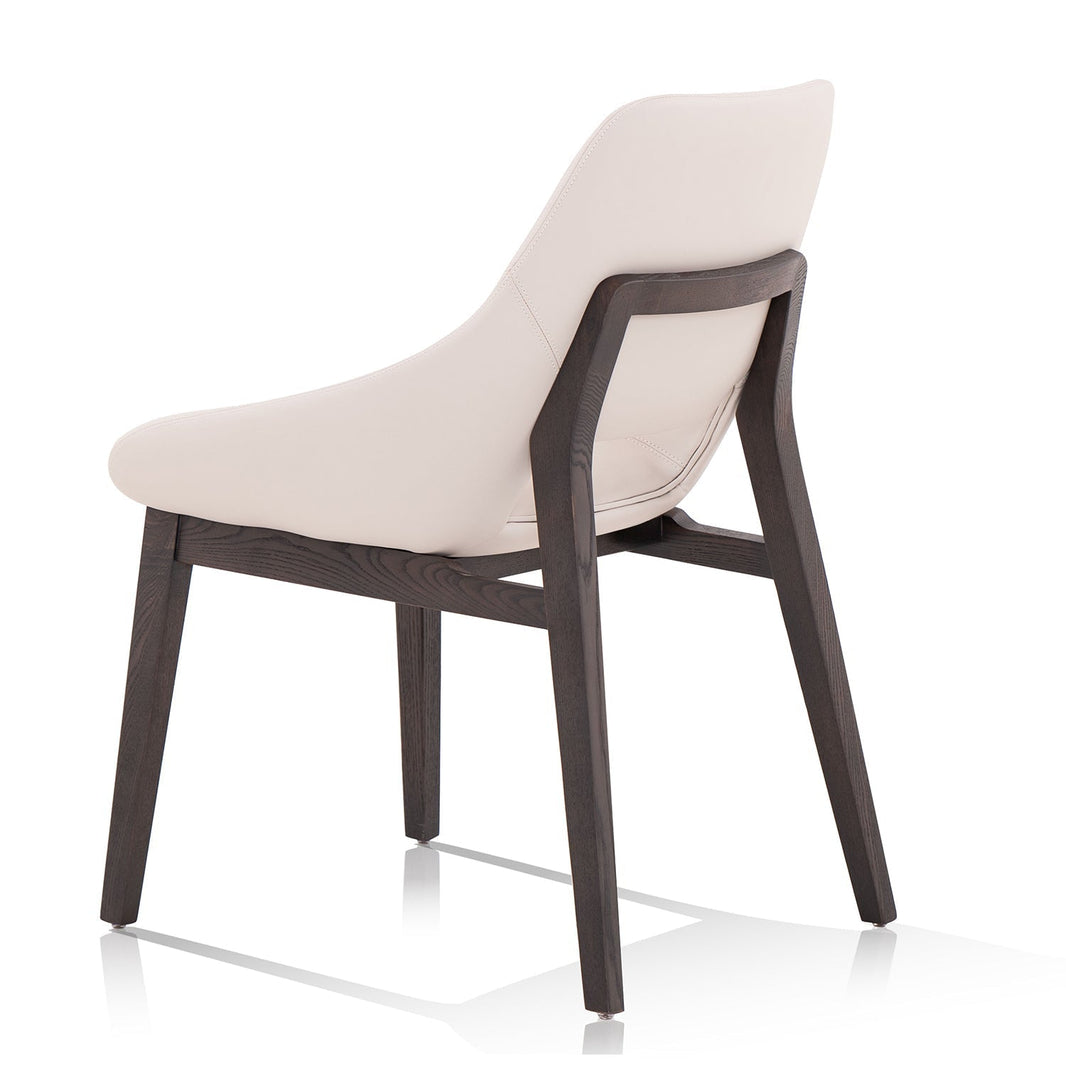Wondering how to keep your natural latex mattress feeling comfy and supportive year after year? Sagging can be a real snooze-killer, but it doesn't have to be inevitable. In this read, you'll find out what makes a latex mattress special, why it might lose its bounce over time, and—most importantly—how to tackle it head-on. Flip through our tips and tricks, and you'll be all set for endless nights of great sleep.
What Is a Latex Mattress and What Are Its Benefits?
A latex mattress is made from the sap of the rubber tree, which is processed into a comfortable foam. This type of mattress is known for being durable, natural, and supportive. Here's why people often choose latex mattresses:
- Latex Mattresses Provide Comfort and Keep Your Spine Happy: They're famed for their balance of comfort and support. The material's elasticity offers relief at pressure points while keeping your spine aligned.
- Choose Latex for an Earth-Friendly Mattress Option: Natural latex is biodegradable and made from renewable resources, which appeals to environmentally conscious consumers.
- Latex Mattresses Help Keep Allergies at Bay: Latex is naturally hypoallergenic and resistant to dust mites,mold, and bacteria, making it an excellent option for allergy sufferers.
- Count on a Latex Mattress to Last for Years: These mattresses typically outlast many other types on the market, resisting sagging and maintaining their shape over time.
- Stay Cool at Night with a Breathable Latex Mattress: Unlike memory foam, latex doesn't trap as much body heat, thanks to its open-cell structure and pinhole patterns that promote airflow.
What Are the Different Types of Latex Mattresses?
When shopping for a latex mattress, you'll encounter mainly two types:
- Natural Latex Mattresses: These are made from the sap of rubber trees, with no synthetic materials added. They offer the most eco-friendly and hypoallergenic solution and are generally the most durable type of latex mattress.
- Blended or Synthetic Latex Mattresses: These combine natural latex with synthetic latex (made from petrochemicals). Blended options aim to strike a balance between the benefits of natural latex and the cost-effectiveness of synthetic materials.

Each type of latex mattress comes in various firmness levels, from soft to extra firm, catering to different sleep preferences. Keep in mind that the construction can also vary, with some featuring layers of foam for additional cushioning or targeted support zones designed to alleviate pressure points. When choosing a latex mattress, consider how the type aligns with your personal values, especially regarding health and sustainability, alongside your budget.
Do Natural Latex Mattresses Sag?
Yes, all mattresses eventually sag - even natural latex ones. However, natural latex mattresses typically resist sagging better than most other types, usually lasting 15-20 years before showing significant dips when properly cared for. The key is buying the right density: a good quality natural latex mattress with high density (above 5.5 pounds per cubic foot) will maintain its shape much longer than cheaper options.

How Does Density Affect Your Latex Mattress's Potential to Sag?
Density directly determines how well your latex mattress will maintain its shape over years of nightly use, making it a crucial factor in preventing premature sagging.
1. Higher Density Latex Means Better Shape Recovery and Less Sagging
High-density latex (5.5-6.5 pounds per cubic foot) is like a high-quality memory foam pillow that bounces back quickly after use. When you get up in the morning, a good high-density mattress recovers its shape within minutes. You won't find yourself rolling into dips or sleeping in valleys, even after using it for years. This consistent bounce-back ability means your mattress keeps supporting you properly night after night.
2. Low-Density Latex Mattresses Start Sagging Within Just a Few Years
Cheaper latex mattresses usually have density ratings of around 4 pounds per cubic foot or less. Within 2-3 years, you'll likely see clear signs of wear: a visible dip where you sleep, an uncomfortable "peak" in the middle of the bed, and those annoying valleys that make you roll toward the center. While these mattresses might save you $300-400 initially, you'll probably need to replace them in half the time of a higher-density mattress.
3. A Firm Mattress Can Still Sag if It Has Low Density
Don't be fooled by how firm a mattress feels in the store. A firm mattress made with low-density materials (below 5 pcf) will still sag over time, just like a cheap firm pillow eventually flattens out. The key is to ask specifically about density numbers, not just test how hard or soft the mattress feels.
4. Super-Soft, Cloud-Like Mattresses Often Sag the Fastest
Those super-soft, sink-in-deep latex mattresses usually have the lowest density ratings (below 4 pcf). While they feel amazing during a quick store test, they often develop problems within months. You might notice deep body impressions that don't bounce back, especially where your shoulders and hips rest. Many people find 1-2 inch deep permanent dips forming within just a year or two of regular use.
Choosing a mattress isn't just about firmness—it's also about getting the right density so it can stand up to years of snoozing without losing its oomph.

What Common Mistakes Cause Latex Mattresses to Sag
Using a latex mattress in ways it wasn't designed for can also lead to early sagging. This includes:
1. Putting Your Latex Mattress on a Weak or Uneven Base Ruins It Fast
Let's be real - putting your fancy latex mattress on a cheap or old base is like building a house on sand. Those big gaps between bed slats? They're basically creating weak spots where your mattress can sink in, like putting a piece of bread over a wide grid - it's going to sag in the middle. And if you're thinking of using that old box spring from your previous bed, think again. It's probably as uneven as a sidewalk after a harsh winter, and your mattress will show it.
2. Folding and Bending Your Mattress During Moves Causes Permanent Damage
Here's something most people don't think about until it's too late: bending or folding your latex mattress is a big no-no. Maybe you're trying to get it through a narrow doorway, or you're storing it temporarily in the garage - whatever the reason, once you bend that mattress, there's no going back. It's like trying to unbend a paperclip - it's never quite the same.
3. Leaving Spills and Using Wrong Cleaners Destroys Your Mattress
Remember that time you spilled your morning coffee in bed and thought "I'll clean it later"? Bad move. Letting spills sink into your latex mattress is like letting a stain set in your favorite white shirt - it's going to cause damage you can't undo. And those "all-purpose" cleaners under your sink? They might as well be mattress kryptonite.
4. Jumping, Gaming, and Working on Your Bed Breaks Down the Material
You know those Sunday mornings when the kids treat your bed like a trampoline? Or when you're working from bed, sitting in the same spot for hours with your laptop? These seemingly harmless activities are actually mattress killers. It's like walking on the same spot on your lawn every day - eventually, you're going to wear a path.
5. Exposing Your Mattress to Sunlight and Humidity Makes It Age Faster
That sunny spot by the window might seem cozy, but it's cooking your mattress like a slow roaster. And that humid basement bedroom? It's about as good for your latex mattress as leaving bread in a steam room.
6. Sleeping and Sitting in the Same Spots Creates Deep, Permanent Valleys
Always sleeping on "your side" of the bed? That's like wearing down one shoe more than the other. Or maybe you like sitting on the edge while getting dressed every morning - that's putting extra stress on one spot, kind of like always leaning on the same spot on your couch until it gets that permanent butt groove.
How to Prevent Your Latex Mattress from Sagging
Pick a Foundation That's Strong and Even - No Gaps Over 3 Inches
Get a sturdy bed frame with slats no more than 3 inches apart - anything wider and your mattress will start to dip between them like a hammock. If you're using a platform bed, make sure it's completely flat and has ventilation holes (those little holes matter more than you'd think). A solid queen-size foundation typically costs between $200-400, but it's worth every penny to protect your $1000+ mattress investment.
Switch Your Mattress Position Every Season
Mark your calendar - every three months, rotate your mattress 180 degrees (that's head-to-foot). If you share your bed with someone heavier or lighter than you, this becomes even more important. We're not talking about flipping - latex mattresses aren't designed for that. Just rotate it when the seasons change, and you'll be good to go.
Always Use a Waterproof Cover to Block Spills and Sweat
Get a good quality waterproof mattress protector - and yes, it has to be waterproof, not just water-resistant. Think about it: a single spilled glass of water or a sweaty summer night can seep into your latex and stay there. A decent protector runs about $50-80 and can save you from a $1500 mattress replacement. Plus, it keeps dust mites and allergens out, which is a nice bonus.
Keep Your Bed for Sleeping Only - No Working or Sitting in One Spot
This isn't just about jumping kids (though that's definitely a no-no). Create a "bedroom is for sleeping" rule. No more laptop work sessions in bed, no more sitting on the edge to tie your shoes, and no more using it as a storage spot for laundry. Each of these habits creates pressure points that, over time, turn into permanent dips. If you need to work from bed occasionally, at least move around to different spots.
Control Your Room's Temperature and Humidity
Your latex mattress doesn't like extreme temperatures or humidity any more than you do. Keep your bedroom between 65-75°F (18-24°C), and use a dehumidifier if your room feels damp. Pull those blinds closed during the day if sunlight hits your bed directly - UV rays can break down latex over time. A basic humidity gauge (hygrometer) costs about $10 and can help you keep an eye on things.
Let Your Mattress Breathe and Clean It Every Few Months
Every few months, strip all the bedding off and let your mattress air out for a few hours. This isn't just about freshness - it lets any trapped moisture evaporate. While you're at it, use your vacuum's upholstery attachment to clean the surface. Just 15 minutes of care every season can add years to your mattress's life.
Keep Your Mattress Flat When Moving - Never Fold or Bend It
When you need to move your mattress, treat it like it's made of glass. Keep it flat - no folding or bending. Get enough people to help (usually 3-4 for a queen size) so you're not struggling and accidentally bending it. Use a proper mattress bag for protection, and never tie it to your car roof like a Christmas tree. If you're hiring movers, make sure they know it's latex and requires special care.
Keep Your Latex Mattress from Sagging
While every mattress will age over time, a few simple habits can make a huge difference in how long yours stays comfortable and supportive. The best part? You can start these easy care routines right away - no special tools or expertise are needed. Just a little attention to how you use and maintain your mattress can add years to its life. After all, a well-maintained latex mattress can give you more than a decade of great sleep.








